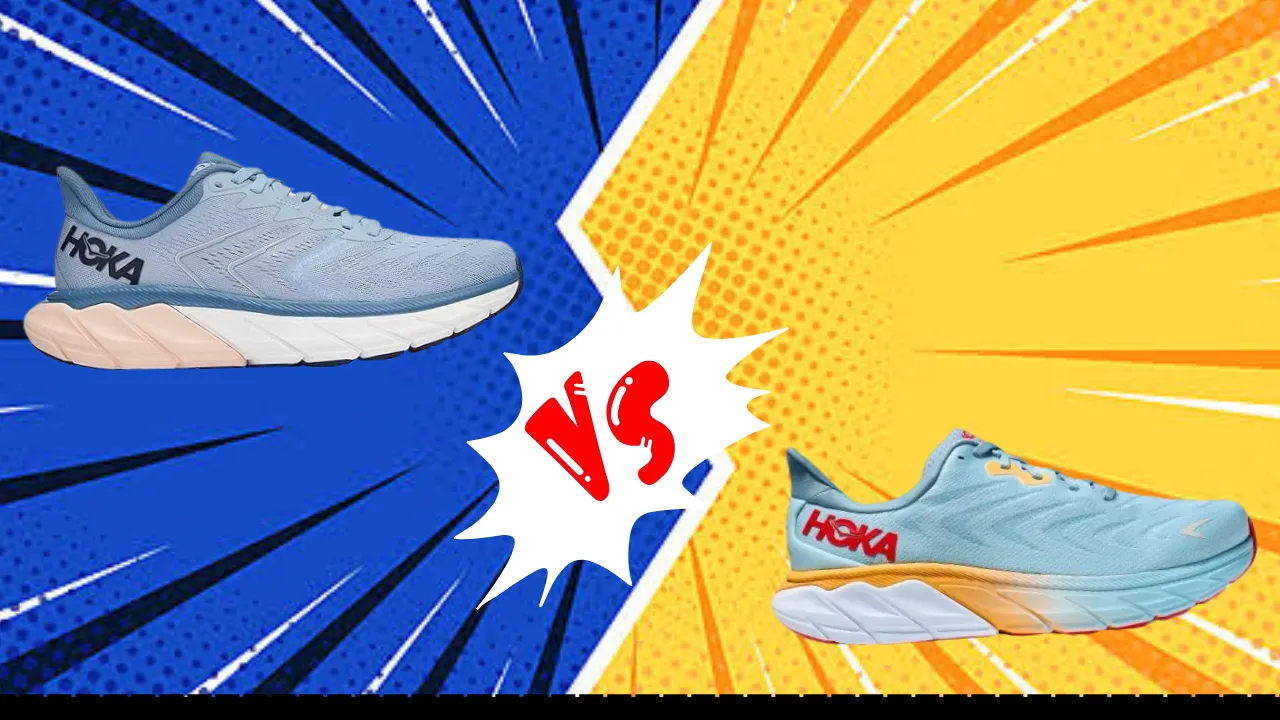The Hoka One One Arahi series has long been a favorite stability shoe for runners needing moderate support. With the recent release of the Arahi 6, runners now have two great options to choose from.
But should you go for the tried-and-true Arahi 5 or the updated Arahi 6? Read on for a detailed comparison of these two stability shoes. We’ll compare the key features like cushioning, stability, weight, and more to help you decide which Arahi is best for you.
Both shoes offer responsive cushioning and support for overpronators, but small differences may make one a better choice depending on your needs.
Similarities And Differences Between Arahi 5 and Arahi 6:
| Feature | Hoka One One Arahi 5 | Hoka One One Arahi 6 |
|---|---|---|
| Launched In | 2021 | 2022 |
| Stability | Moderate | Moderate |
| Flexibility | Moderate | Moderate |
| Sizing | Men’s 7-14, Women’s 5-11 | Men’s 7-14, Women’s 5-11 |
| Weight | 9.6 oz (M), 8.8 oz (W) | 9.2 oz (M), 8.4 oz (W) |
| Cushioning | J-Frame midsole, CMEVA foam | CMEVA foam, J-Frame midsole |
| Outsole | Durable rubber | Durable rubber |
| Midsole | J-Frame, CMEVA foam | J-Frame, CMEVA foam |
| Upper | Engineered mesh | Engineered mesh |
| Retail Price | $295 | $140 |
Features Comparison
MATERIALS
The outsoles on both shoes use Hoka’s high-abrasion rubber for durability on impact. The Arahi 5 has slightly more aggressive 5mm lugs while the Arahi 6 lugs are 4mm.


The insoles contain Ortholite foam for cushioning. The upper on both uses an open-engineered mesh for breathability. The materials are very similar, with the Arahi 6 making only minor outsole tweaks.
DURABILITY
Both the Arahi 5 and Arahi 6 are durable shoes thanks to rubbers like the high abrasion rubber outsole and durable foam in the midsole. The Arahi 5 has proven itself over time, lasting for around 300-500 miles for most runners.
Early reviews of the Arahi 6 suggest similarly good durability, helped by the durable J-Frame and strategic rubber placement. These stability shoes can go the distance.
FIT
The fit of the Arahi 5 and Arahi 6 is nearly identical, which is no surprise as they share the same last shape. The engineered mesh upper provides a secure, flexible fit. The roomy toe box allows natural toe splay while the midfoot wraps securely.


The heel counter and padded collar lock the foot in place. Both shoes should fit true to size for most runners. The Arahi 6 has a slightly softer upper for an even more comfortable fit.
STABILITY
As moderate stability shoes, the Arahi 5 and Arahi 6 offer the right amount of support for overpronators without being too rigid. Both use the J-Frame technology in the midsole, a firmer medial post to prevent excessive rolling in.
However, the Arahi 6 has an updated J-Frame that is slightly less supportive than the Arahi 5’s version. Runners needing more significant stability may favor the tried-and-true Arahi 5.
CUSHIONING
The Arahi series is known for its responsive cushioning, thanks to the CMEVA midsole foam. This soft foam provides all-day comfort without feeling too mushy or unstable.
The Arahi 5 offers plush cushioning that works well for longer runs. The Arahi 6 uses an updated CMEVA foam that feels slightly firmer for a more responsive feel. The lower drop also increases ground-feel. So runners looking for softness underfoot may prefer the Arahi 5.
VALUE
With a $295 price tag, the Arahi 5 comes at a premium cost, while the Arahi 6 is $140. They both deliver features to match their prices. The Arahi 5’s cushioning and stability technologies make it a workhorse shoe that can log daily miles, though the high price tag means it has to go the distance to justify the cost.
The Arahi 6 offers similar technologies and durability at a more affordable $140 price point, making it a better value for many runners. Considering the significant price difference, the Arahi 6 generally provides better value, unless you strongly prefer the Arahi 5’s cushioning and proven model.
Performance Comparison
WALKING
The Arahi 5 and Arahi 6 both make cushioned walking shoes to absorb impact. The broad forefoot base and grippy outsole also supply stability for walking.
The Arahi 5 may have a slight edge for all-day wear since its plusher cushioning never bottoms out. But both provide excellent walking comfort at a reasonable weight.
RUNNING
As stability running shoes, the Arahi 5 and 6 naturally excel at daily runs. The cushioning softens impact while the J-Frame posts guide overpronators. The Arahi 5’s plusher foam may work better for recovery runs and long distances.
But some may prefer the Arahi 6’s firmer snap for faster training. Both shoes deliver excellent stability for overpronators at slower and faster paces.
PLANTAR FASCIITIS
With ample cushioning and support, the Arahi series works well for plantar fasciitis. The mesh uppers have no irritating seams while the broad forefoot gives toes room to splay.
The Arahi 5 likely provides slightly better cushioning for plantar pain thanks to its plusher foam. But both shoes can ease symptoms by absorbing shock and stabilizing feet.
STANDING ALL-DAY
The Arahi 5 gets the edge for all-day standing comfort thanks to its plusher midsole that won’t pack out or flatten. However, the Arahi 6 is still comfy enough underfoot to use for extended periods on your feet.
Both have roomy toe boxes to prevent cramping and support features to reduce fatigue. So workers on their feet on all shifts should consider either the Arahi model.
Final Verdict
The Hoka One One Arahi 5 and Arahi 6 have more similarities than differences as moderate stability shoes. The Arahi 6 makes small tweaks like a slightly firmer ride and less stable midfoot. But core features like the broad base, mesh upper, and durable cushioning remain the same.
The Arahi 5 is likely the better choice if you:
- Want maximum plushness and shock absorption
- Need stability for severe overpronation
- Plan to log high mileage or recovery runs
The Arahi 6 may be preferable if you:
- Prefer a responsive, snappy feel underfoot
- Are between stability models and need less support
- Want the latest and greatest technology
Both Hokas are excellent options for overpronators seeking an everyday trainer with comfort and support. The Arahi 5 takes the lead for its proven mix of soft cushioning and stabilizing features.
But newer runners may appreciate the slightly updated ride of the Arahi 6. Be sure to consider your mileage, gait needs and cushioning preferences to decide which Arahi suits you.

